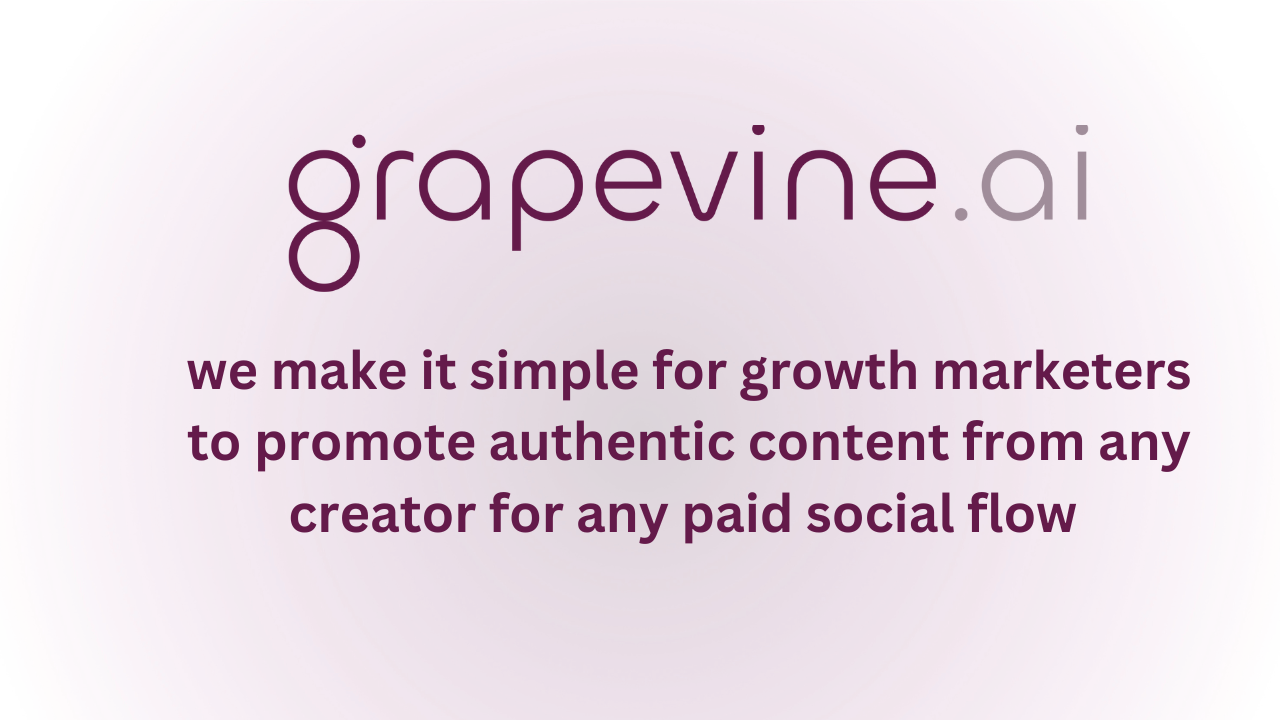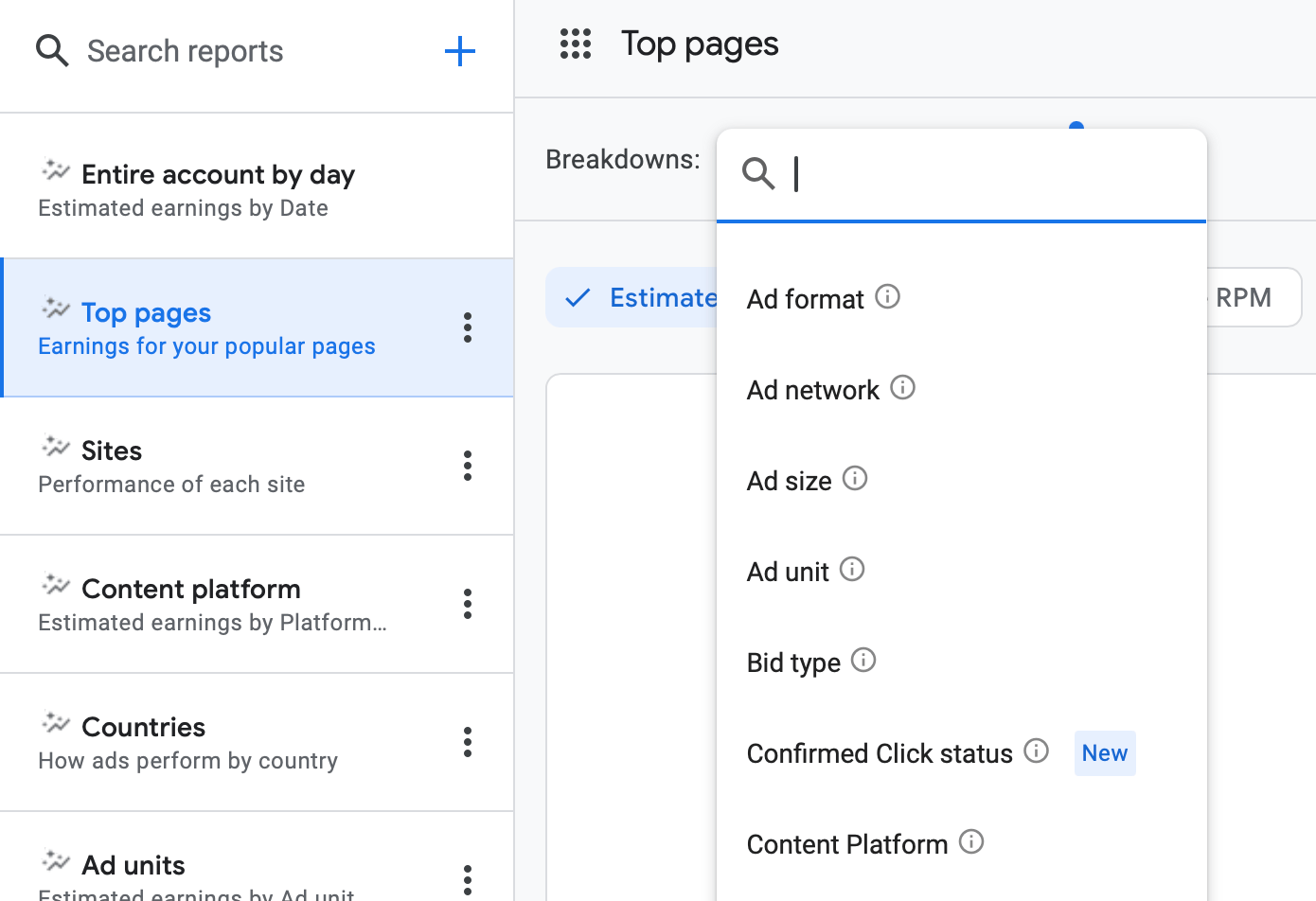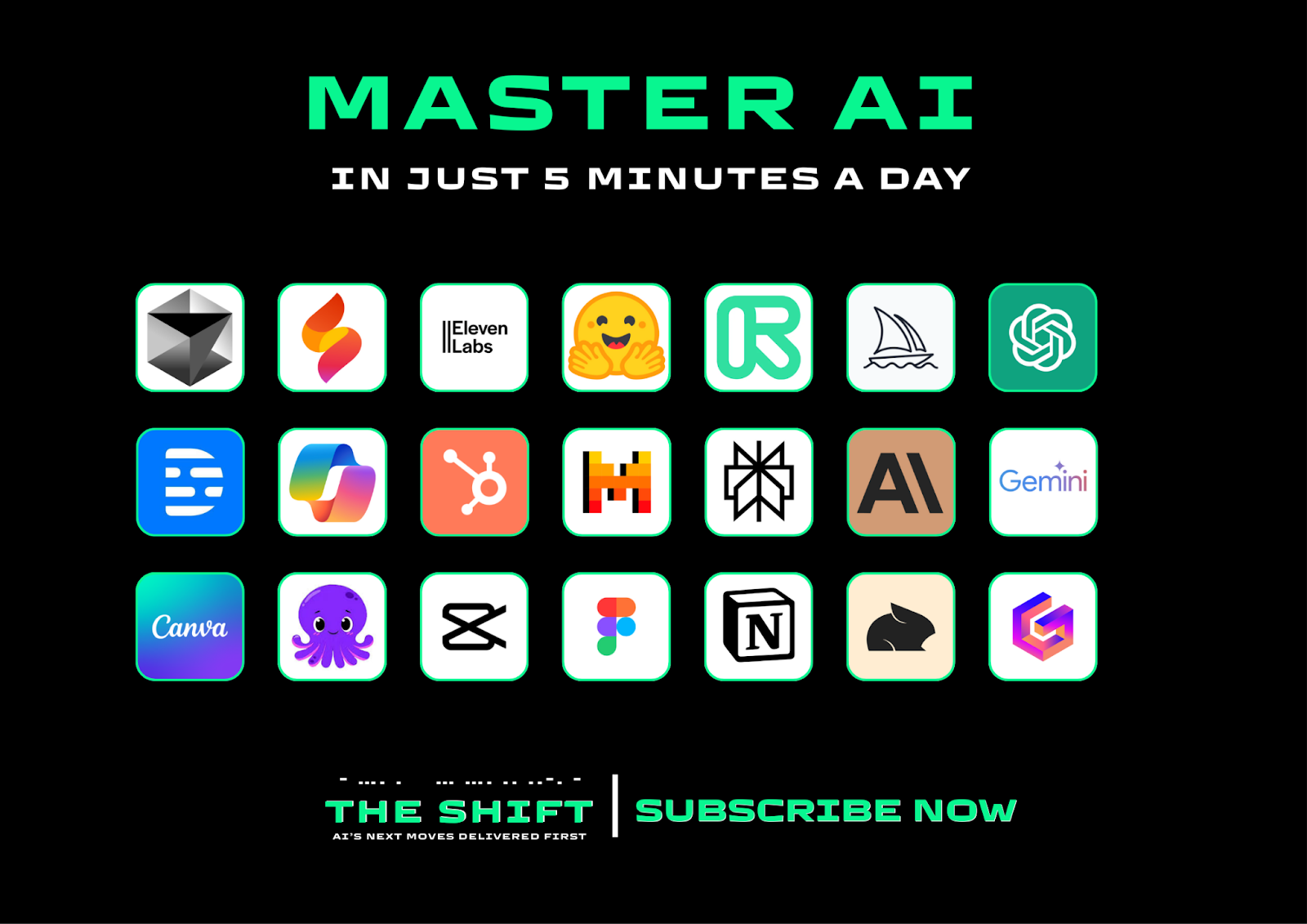Meta tracks regret not just ROAS
🎯 Survey driven trust score controls your delivery and spend, Google adds new ad integrity tool as social traffic crashes, and more!

Hey there Smarty 👋
Are you geared up to catch the latest and greatest in quick shorts?
And just a quick heads-up! If you stumbled upon us through a friend, make sure to subscribe here! That way, you’ll never miss out on the trending shorts.

Together with Grapevine
🔥You Don’t Need More Creators. You Need Results.

Every week your team spends chasing briefs, negotiating contracts, and waiting on edits… You lose testing velocity. And in Q4, that lag costs you real money.
That’s where Grapevine comes in, your fully managed UGC performance engine. They turn creative chaos into predictable growth, delivering data-backed UGC that beats branded ads by 20%+ across Meta, TikTok, and Google.
- Get a dedicated brand strategist who owns briefs, sourcing, and iterations
- Tap into a verified creator network that’s built for trust and conversion
- Go from concept to launch-ready assets in days, not weeks
150+ brands like Madison Reed and Just Food for Dogs scaled Grapevine assets from 15% to 45% of paid media in under 6 months, unlocking 50% higher LTV and 33% lower CPL.
Ready to outspend competitors without overspending?
Book your strategy call and get one extra creator (10+ new ads) free!

🎯 Meta tracks regret not just ROAS
Every brand wants to win Q4, but few realize how easily a “hot” offer can poison Q1. One wrong SKU, one misleading hook, and Meta punishes you invisibly for weeks. Their survey-driven grading system tracks post-purchase buyer satisfaction, and poor experiences raise your CPMs, restrict delivery, and tank CAC even after the sale.
🧠 Understanding Meta’s Hidden Grading System
Meta uses Purchase Experience Scores (PES) to track what happens after a user clicks and buys. These surveys go out 1–2 weeks post-purchase and ask questions like:
- Did the product match your expectations?
- Was the quality as described?
- Would you buy again from this brand?
Based on this, Meta assigns a 1–5 score to your page-level domain. If your rolling average falls below 2.5, you’ll face:
- CPM penalties up to 30–50%
- Reduced ad delivery volume
- Throttled spend caps
- Higher CPAs even with identical creative
Q4 offers that convert but disappoint cause long-term platform decay. You’re not just scaling revenue, you’re borrowing trust from Meta’s ecosystem.
🧪 Four Experimental Layers to Prevent Post-Purchase Fallout
1. Run Catalog Sentiment Zoning
Assign green/yellow/red zones across your entire SKU list based on:
- Return rate
- Support tickets per 1K orders
- NPS by product
Red SKUs (fragile, misleading, volatile) get zero prospecting budget. Yellows need education layers. Greens are Q4 scale ammo. This avoids letting your worst-performing product dictate your entire domain’s fate.
2. Inject Offer Transparency Variants
Frame the same product multiple ways:
- “Quick-start kit” vs. “Advanced builder set”
- “Everyday use” vs. “Intended for specific routines”
- “For casual users” vs. “Built for power users”
Let users self-select based on effort and intent. Add in-cart expectation prompts (“includes setup steps, video tutorials”) to reduce cognitive dissonance.
3. Build a Predictive Offer Decay Model
Track:
- First-click to ticket window lag
- SKU × offer × traffic source churn curves
- PES dips 2–3 weeks post-campaign
Use this to auto-throttle ad sets tied to decaying post-purchase quality, before Meta does it for you.
4. Add Soft Walls to Risky Incentives
For fragile bundles or uncertain outcomes:
- Require checkout quiz or setup commitment
- Gate discounts behind a video view
- Offer opt-out swaps for known complaints
You’re training high-risk buyers to expect precision, not shortcuts.
Why It Matters
Brands that chase short-term Q4 volume without offer safeguards end up paying for it twice, once in refunds, again in ruined CPMs. Meta doesn’t just track ROAS. It tracks regret. And unless you run Survey-Safe Funnels with pre-cleared SKU logic, you’re flying blind into 2025 with a downgraded ad account and a fatigued customer base.
This system doesn’t limit scale, it lets you scale safely and longer.

🧩 Google Adds New Ad Integrity Tool as Social Traffic Crashes
Google is giving publishers more visibility into ad click quality with its new Confirmed Click status, just as social media platforms continue to choke off traffic to news sites. The update helps reduce accidental ad engagement, while publishers face a 30% decline in social referrals since 2022.

The Breakdown:
1. AdSense adds Confirmed Click visibility - The new Confirmed Click status lets publishers see where unintended clicks may occur, highlighting whether Google’s confirmation prompt, requiring users to click “Visit site” is active. It’s designed to minimize accidental engagement and improve advertiser trust.
By viewing which pages or units have Confirmed Click “Applied,” site owners can identify poor ad layouts or misleading placements, reducing invalid traffic.
2. Social referrals crash by 30% in three years - Publishers are facing a steep traffic drop, as referrals from social platforms have fallen from 1.75B to 1.22B since 2022. The algorithmic pivot toward short-form video has deprioritized link posts.
In response, X is experimenting with link display changes to make posts more engaging, while Instagram is testing clickable in-post links.
Together, these shifts show a deeper realignment in the digital ecosystem. Google is cleaning up ad quality while social media drifts away from link-based discovery. For publishers, adapting to both cleaner monetization and changing referral dynamics will be key to staying visible and profitable in 2025.

Together with The Shift
Master AI In Just 5 Minutes A Day With This Free Newsletter

AI can do a lot, but most newsletters leave you wondering what’s actually worth trying.
That’s where The Shift comes in.
It doesn’t just tell you what’s new in AI. Every edition always answers ONE question:
“What can you do with AI today that saves you time, money, or effort?”
In The Shift, you’ll get:
✅ Real-world examples of smart AI hacks by brands that you can steal
✅ Mini step-by-step guides to build smarter AI workflows in minutes
✅ Access to 2,000+ curated AI tools and free courses
✅ 300+ powerful AI prompts you can copy/paste/tweak
No hype. No wasted time. No “just in case” news.
If it’s in The Shift, it’s because it can make your work better. Today.
Subscribe to The Shift now - it’s free!

🚀Quick Hits
📌 Pinterest has shared tips to boost Black Friday–Cyber Monday sales, urging brands to optimize product feeds, highlight promotions, and use automated Performance+ campaigns to match shopper intent, as 76% of Pinterest users shop these events.
📊 LinkedIn unveils new B2B marketing measurement framework. The platform’s “New Rules of B2B Marketing Measurement” guide urges marketers to realign KPIs around broader, multi-signal insights, reflecting evolving tools, audience behaviors, and attribution methods.
🧠 AI assistants are flawed in 45% of news responses. A European Broadcasting Union (EBU) and BBC study found nearly half of AI-generated news answers contained major errors, with Google Gemini leading issues at 76%, mainly due to sourcing inaccuracies.
💡 ChatGPT referrals lag far behind Google in sales impact. A study of 973 ecommerce sites found ChatGPT traffic converts 200× worse than Google Search, with lower revenue per session and weaker purchase intent despite steady growth.

That’s a wrap for today! Tell us your thoughts about today's content as we line up more Shorts! And don’t hesitate to share this with someone who’d adore it. 🥰
